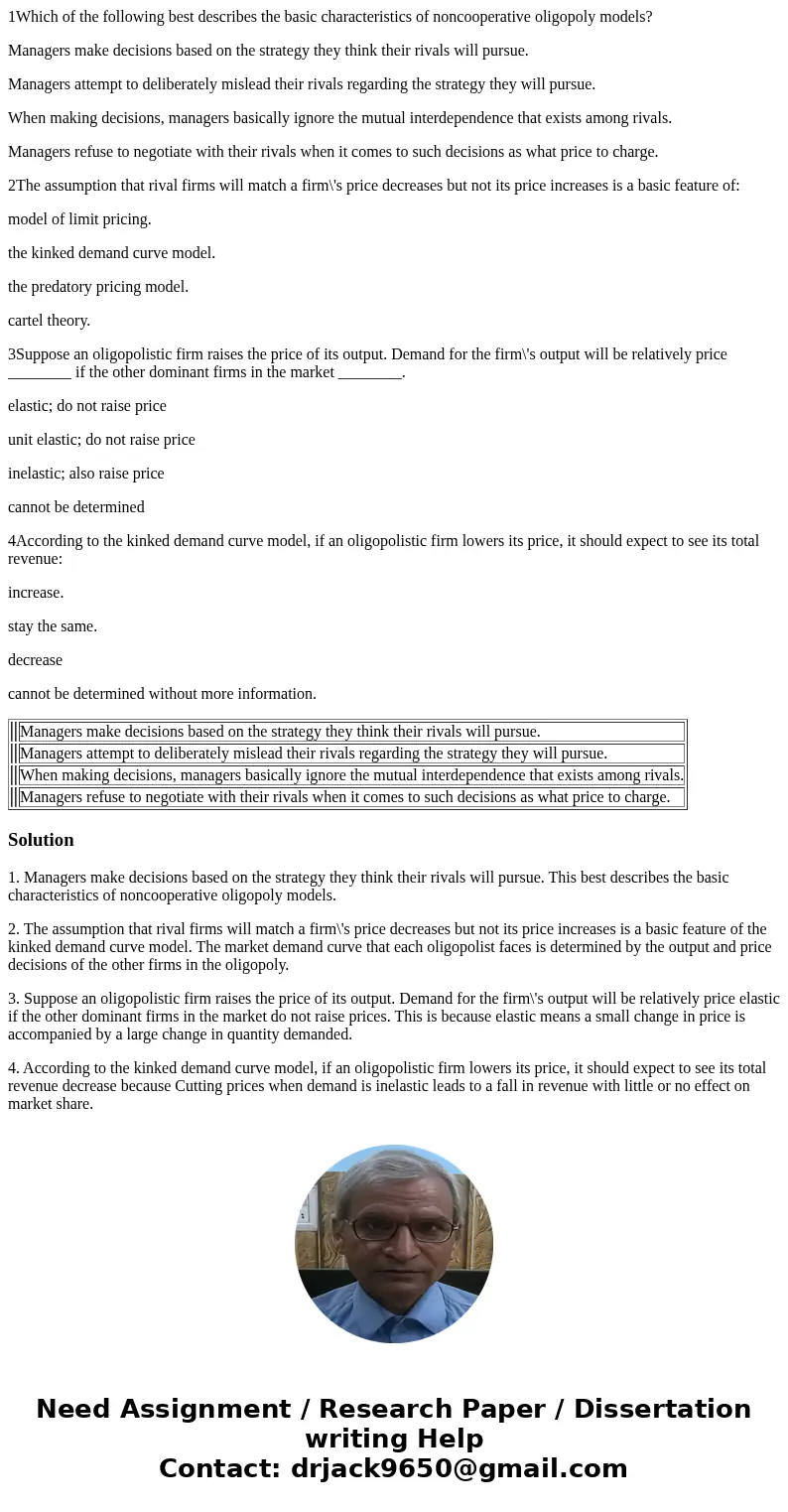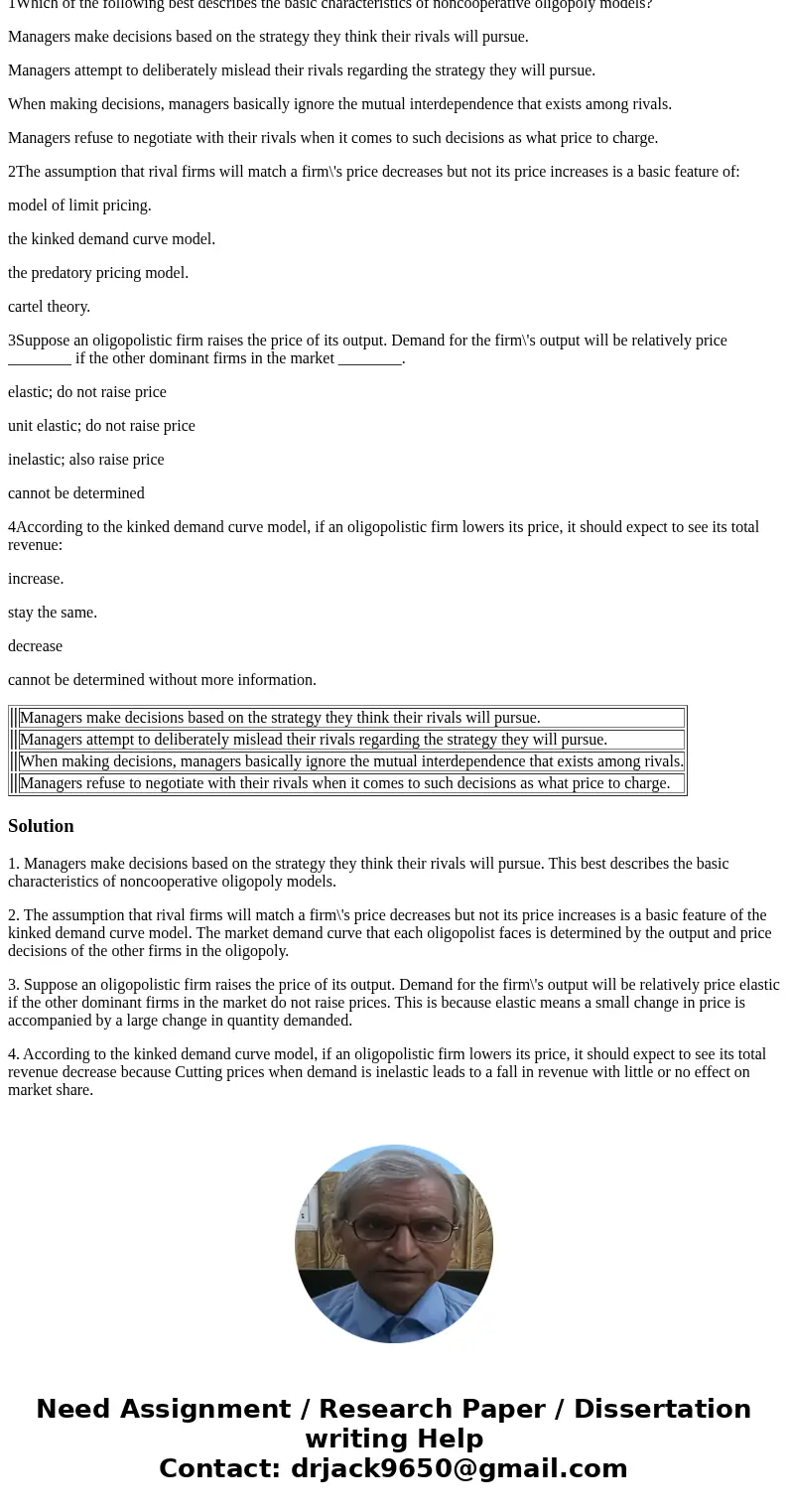1Which of the following best describes the basic characteris
1Which of the following best describes the basic characteristics of noncooperative oligopoly models?
Managers make decisions based on the strategy they think their rivals will pursue.
Managers attempt to deliberately mislead their rivals regarding the strategy they will pursue.
When making decisions, managers basically ignore the mutual interdependence that exists among rivals.
Managers refuse to negotiate with their rivals when it comes to such decisions as what price to charge.
2The assumption that rival firms will match a firm\'s price decreases but not its price increases is a basic feature of:
model of limit pricing.
the kinked demand curve model.
the predatory pricing model.
cartel theory.
3Suppose an oligopolistic firm raises the price of its output. Demand for the firm\'s output will be relatively price ________ if the other dominant firms in the market ________.
elastic; do not raise price
unit elastic; do not raise price
inelastic; also raise price
cannot be determined
4According to the kinked demand curve model, if an oligopolistic firm lowers its price, it should expect to see its total revenue:
increase.
stay the same.
decrease
cannot be determined without more information.
| Managers make decisions based on the strategy they think their rivals will pursue. | ||
| Managers attempt to deliberately mislead their rivals regarding the strategy they will pursue. | ||
| When making decisions, managers basically ignore the mutual interdependence that exists among rivals. | ||
| Managers refuse to negotiate with their rivals when it comes to such decisions as what price to charge. |
Solution
1. Managers make decisions based on the strategy they think their rivals will pursue. This best describes the basic characteristics of noncooperative oligopoly models.
2. The assumption that rival firms will match a firm\'s price decreases but not its price increases is a basic feature of the kinked demand curve model. The market demand curve that each oligopolist faces is determined by the output and price decisions of the other firms in the oligopoly.
3. Suppose an oligopolistic firm raises the price of its output. Demand for the firm\'s output will be relatively price elastic if the other dominant firms in the market do not raise prices. This is because elastic means a small change in price is accompanied by a large change in quantity demanded.
4. According to the kinked demand curve model, if an oligopolistic firm lowers its price, it should expect to see its total revenue decrease because Cutting prices when demand is inelastic leads to a fall in revenue with little or no effect on market share.


 Homework Sourse
Homework Sourse